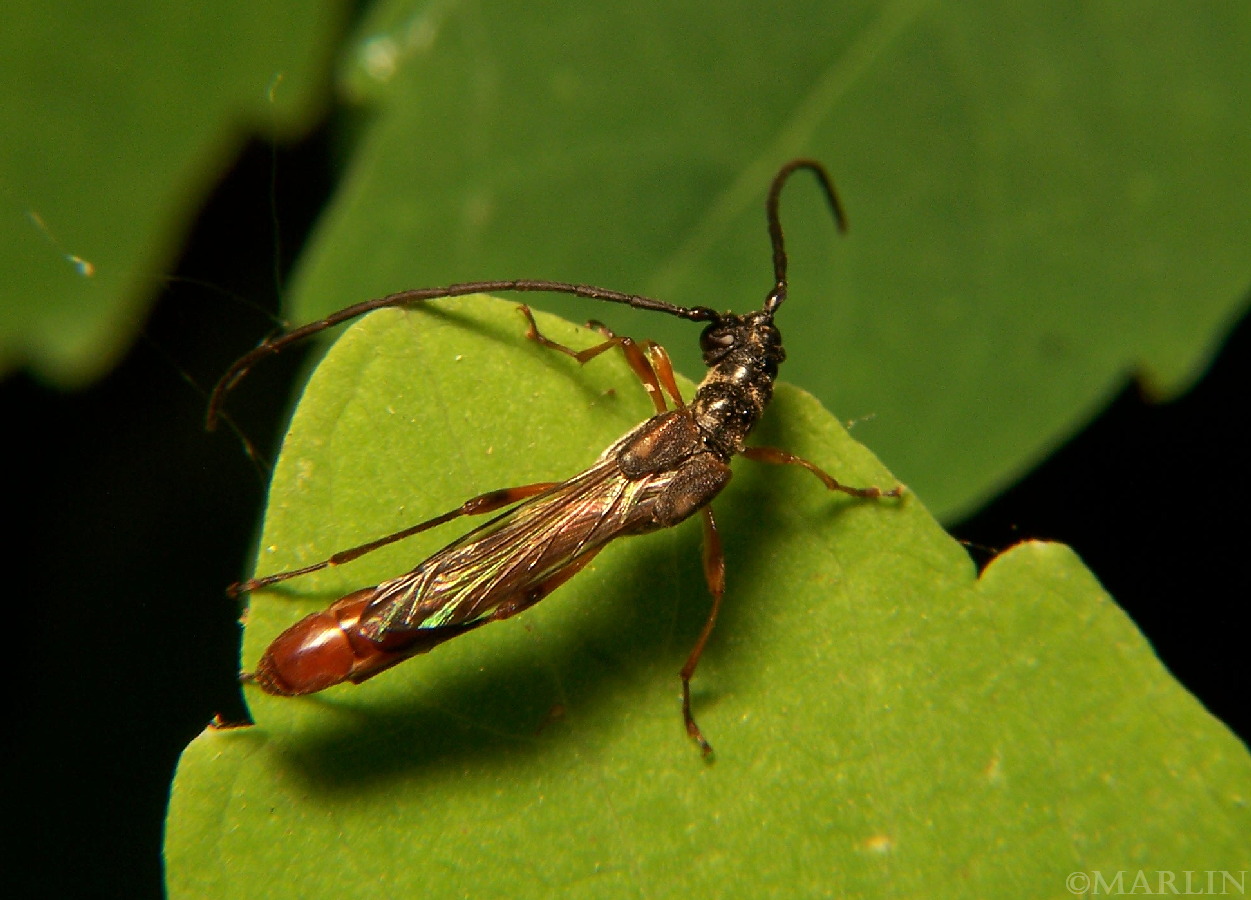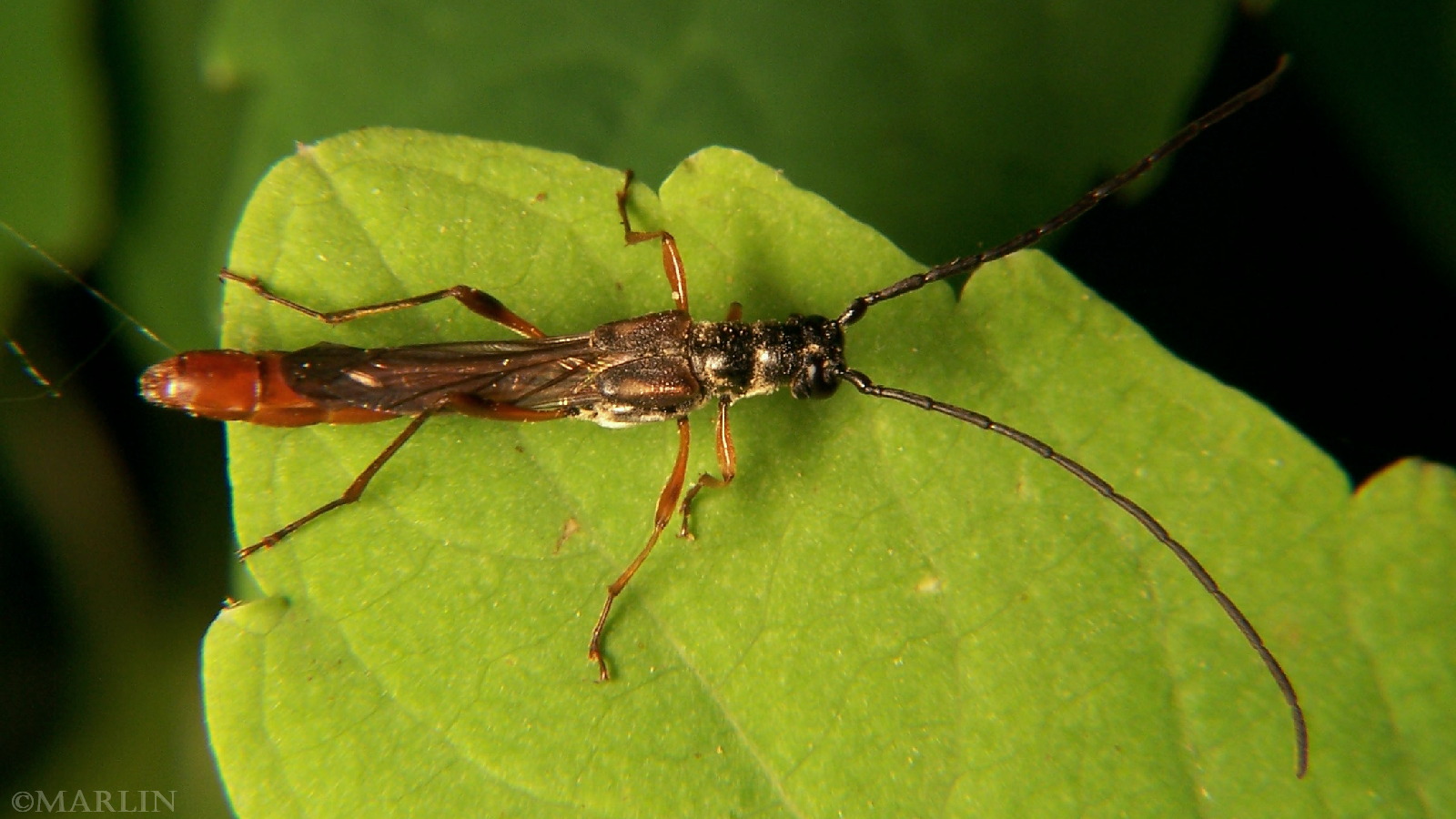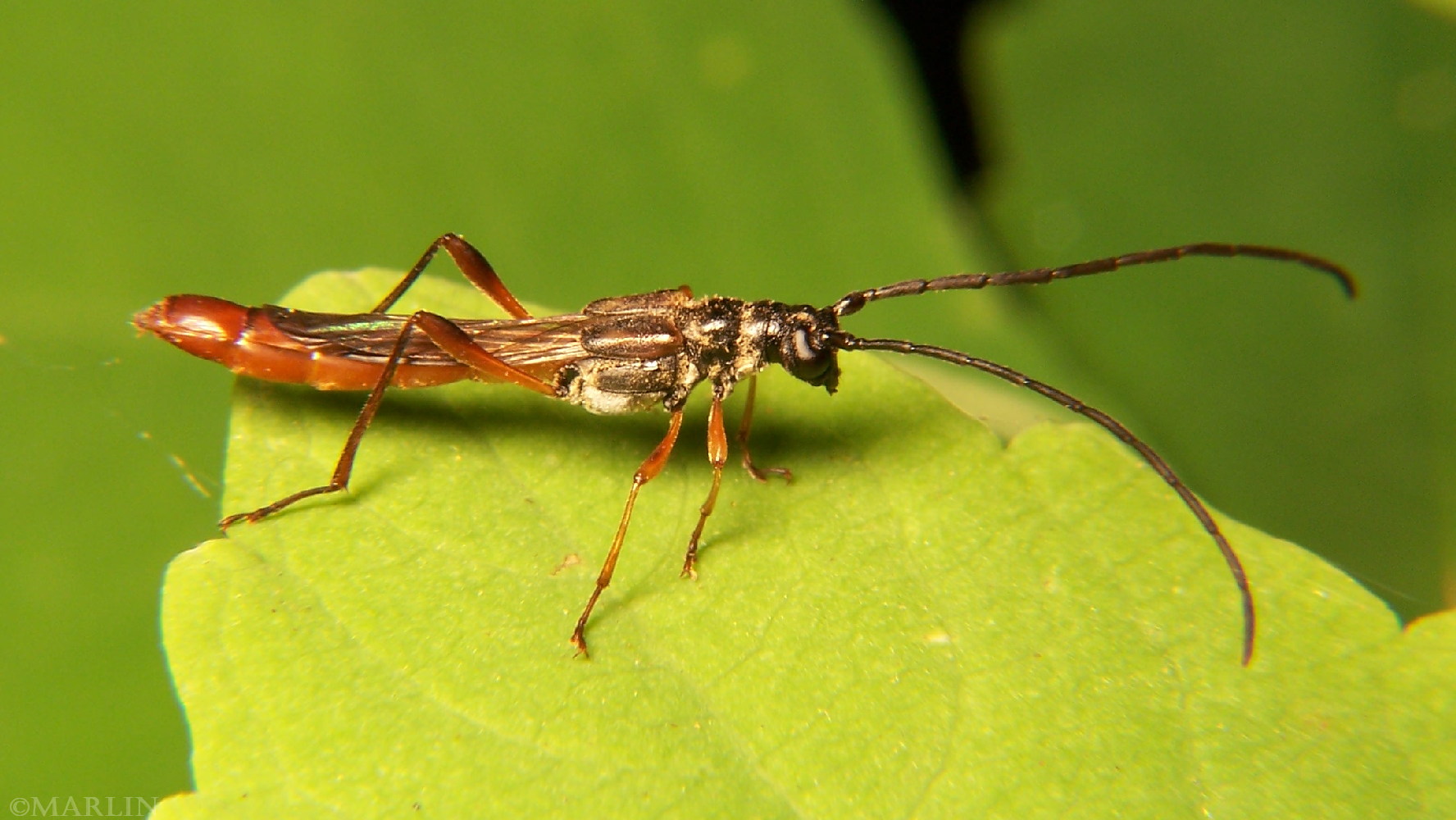Longhorn Beetle – Necydalis melita
The antennae of a longhorn beetle, the wings of a sawfly, the body of an ichneumon wasp, and some sort of nub elytra wannbees.. ? Wow. When I first saw this beetle I didn’t know what to think. But it’s ok. They are very cool insects and can be numerous under the right conditions. I have found dozens in one small patch of forest at White Pines State Park near Polo, Illinois. Females (alas, which I have never encountered) look even more like some sort of wasp, with a pointed ovipositor looking all nasty and sting-ey. See one here: https://bugguide.net/node/view/21184
Family: Cerambycidae – Longhorn Beetles
Live beetles photographed at DuPage County, Illinois. Male Size: 10mm
 This beetle’s elytra (hardened wing coverings) are nearly vestigial. Cerambycidae is a cosmopolitan family of beetles characterized by extremely long antennae. In various members of the family, however, the antennae are quite short (e.g., Neandra brunnea).
This beetle’s elytra (hardened wing coverings) are nearly vestigial. Cerambycidae is a cosmopolitan family of beetles characterized by extremely long antennae. In various members of the family, however, the antennae are quite short (e.g., Neandra brunnea).
With over 20,000 species described, Cerambycidae is a large family. Many are serious pests, with the larvae boring into wood, where they can cause extensive damage to either living trees or untreated lumber. A number of species mimic ants, bees, or wasps (see Locust Borer), though a majority of species are cryptically colored. The giant long-horned beetle Titanus giganteus, from northeastern South America is one of the largest insects extant, with a maximum known body length of just over 16 centimeters.
 Most Cerambycidae larvae feed within dead, dying or even decaying wood, but some taxa are able to use living plant tissue. Girdlers sever living branches or twigs, with the larvae developing within the nutrient-rich distal portion. The larvae of a few species move freely through the soil, feeding externally upon roots or tunneling up under the root crown. [3]
Most Cerambycidae larvae feed within dead, dying or even decaying wood, but some taxa are able to use living plant tissue. Girdlers sever living branches or twigs, with the larvae developing within the nutrient-rich distal portion. The larvae of a few species move freely through the soil, feeding externally upon roots or tunneling up under the root crown. [3]
Most adult cerambycids, particularly the brightly colored ones feed on flowers and pollen, and as such can be important pollinators of some flowering plants. Other species consume sap, leaves, blossoms, fruit, bark or fungi. [3]
References
- Douglas Yanega, Field Guide to Northeastern Longhorned Beetles (Illinois Natural History Survey, 1996).
- Josef Nissley Knull, The long-horned beetles of Ohio: (Coleoptera: Cerambycidae)
- Bugguide.net, Longhorn Beetle – Necydalis melita
Beetles Main | Beetles Index | Longhorns | Leaf Beetles | Soldier | Blister | Lady | Scarab
Tree Encyclopedia / North American Insects & Spiders is dedicated to providing family-friendly educational
resources for our friends around the world through large images and macro photographs of flora and fauna.


